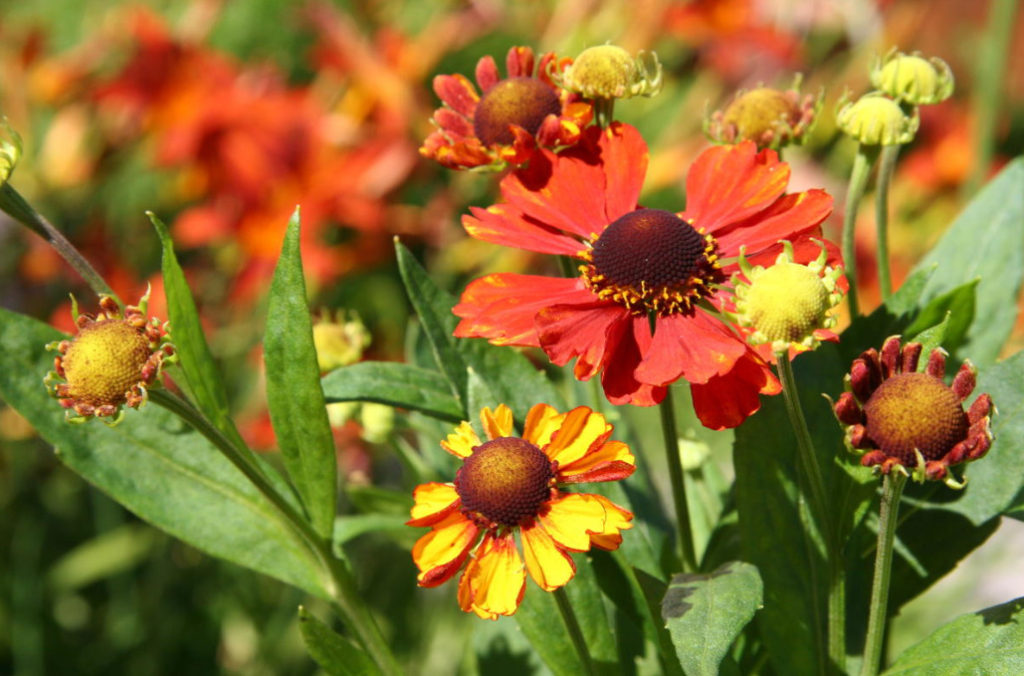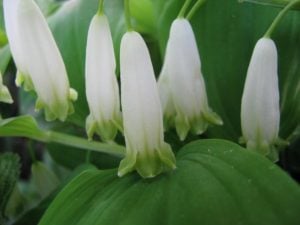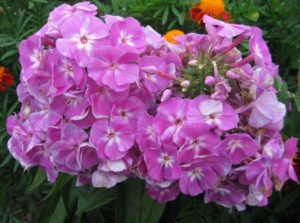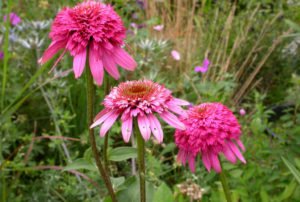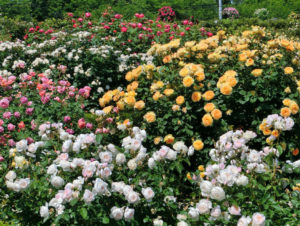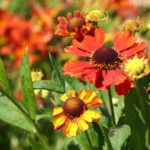Helenium in garden design
Helenius ‘ role ensures his continued popularity among designers. It pays homage to nori and Sandra Pope, known for their wonderful monochrome flower beds. For example, in the Botanic garden of Oxford, they created a composition where the variety ‘Chipperfield Orange’ was planted with dahlias of the same Sunny orange hue. And John Brooks used Helenius … in the “tropical” flower garden! There, our old friend’s partners were exotic hibiscus and Canna.
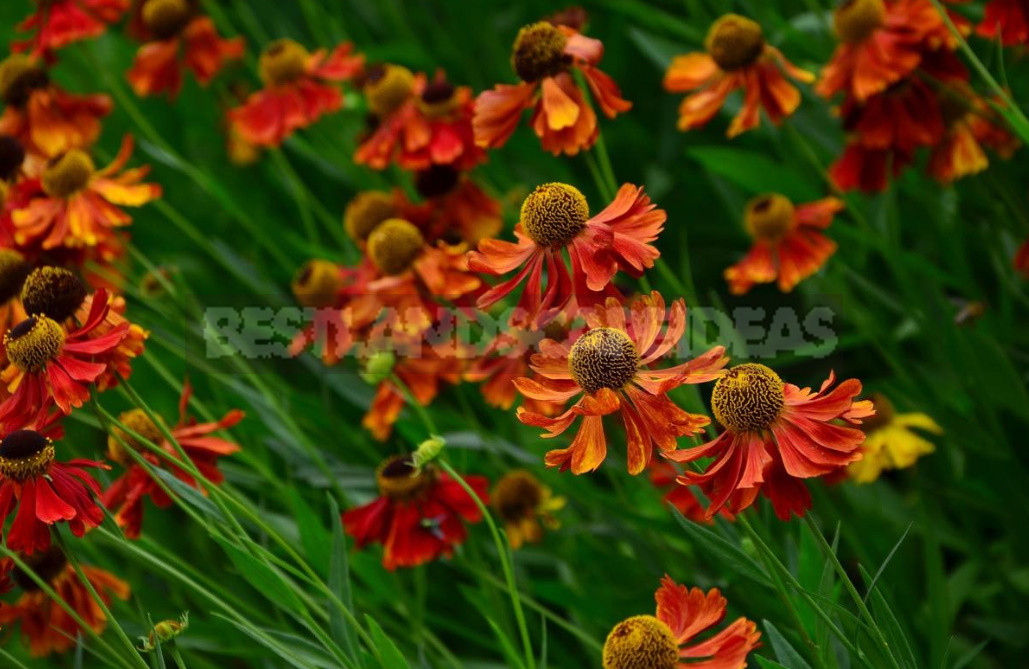
But the main fan of Helenium is, of course, Pete Rudolph. In its amazing compositions, this flower fully displays all its advantages, because Udolf is able to emphasize the beauty of the most unassuming, at first glance, plants like no other. Helenium partners in its boarding houses are mainly grain crops. A scattering of bright flowers seemed to float over a sea that swayed in the wind, and grasses or stars twinkled through a curtain created by the blooming panicles of cereals. In addition, the famous Dutchman selects neighbors Helenium with completely different forms of flowers, creating striking contrasts with his “daisies”.
Helenium in a small garden
I have heard the opinion that helium is not a suitable plant for a small garden, because, being of an impressive size and growing rapidly, it takes up too much space. In my opinion, this is not quite fair.
First, among the various varieties, you can find those whose height does not exceed 80 cm (2.5 ft), for example, ‘Chelsea’. Or “double trouble” – an unusual variety with Golden-yellow double flowers. Crumb ‘ruby Tuesday’ height of only 50 cm (1.6 ft) can be grown even in a pot.
Secondly, much depends on what place is given to Helium in the garden. High grades are especially effective when they can be admired from a distance. If you plant one of these beauties in a corner formed by two sides of the fence, and place a group of plants of a lower height in front of it, then this composition will be a good alternative to traditional scenes from shrubs. This is what I did in my garden, using Udolf’s ideas.
I have a triangular flower garden. Most distant from the viewer the top of this isosceles triangle was occupied by Helenium “Muranska beauty”. A monarda grew luxuriantly in front of him, and in the foreground was a stunted astilba with dark foliage and dark red panicles of flowers. On both sides of them are planted daylilies with wine-red flowers, and as a border separating the flowerbed from the lawn, a gravilat is used. Plants of the same color, but with different inflorescences complement each other, and the helium in the background sets the tone of the entire composition, which has a fairly long flowering period thanks to the Geum and day lilies.
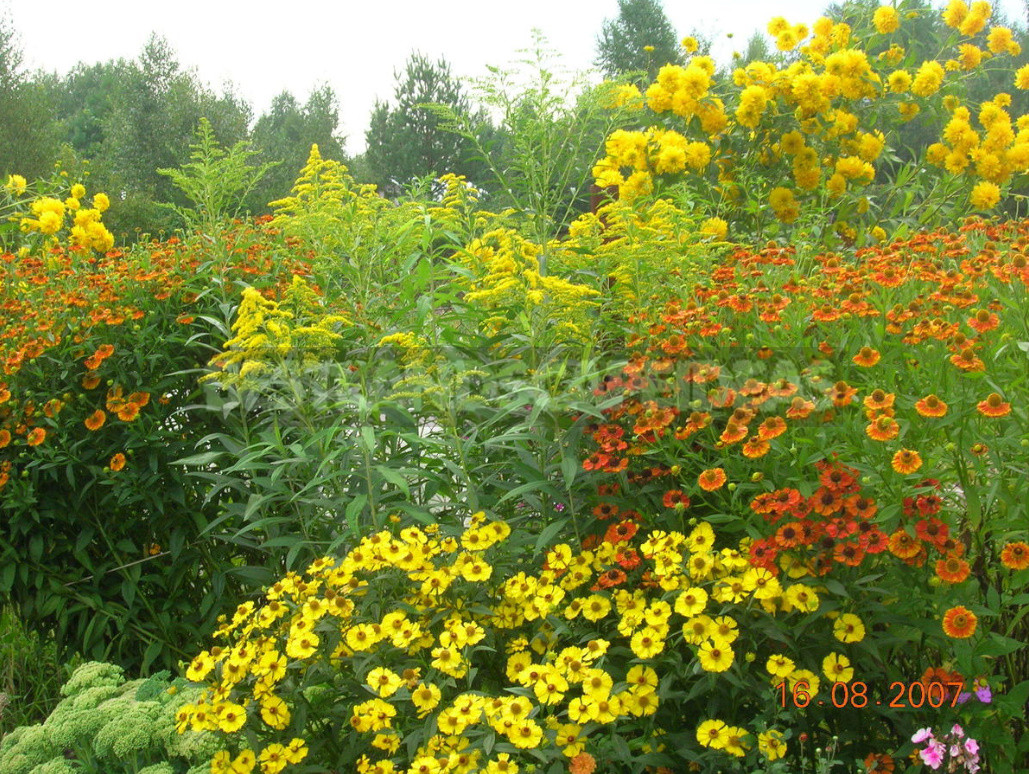
In another flower garden, the peak of which is at the end of summer, I planted three varieties of Helenium with different heights and colors: one and a half meters with orange-red flowers, red a little more than a meter high and a relatively low bright yellow. Their partners were plants that can be found in almost every garden and even behind the fence. This flower garden has absorbed all the colors of autumn, and each plant in it successfully performs its own party again thanks to the shape of the inflorescences.
You can think of countless ways to use helium in garden compositions. I want to put a high reltively class (for example ‘ ‘Butterpat’ or ‘die blonde’) next to the dark purple Novobelici Aster ‘Amethyst’. If you place an Aster Bush of the same rich purple color in front of the Helenium, and a low rudbeckia in front of the novobelichs, for example, the varieties ‘village dwarfs’, then these plants with inflorescences in the form of baskets will give a classic bright color combination. You can also add wormwood “God’s tree”. It seems to me that this will give this small composition lightness and airiness.
In my opinion, Helenium looks great in the company of Kochia. It is planted in the center of a round island bed, the Kochia can be placed in 2-3 rows around the perimeter and cut in tiers over the summer. At the end of the season, when Kochia gets its luxurious autumn color, Helenium will show off like a bouquet in an elegant vase, without even needing a garter, because Kochia will not allow the curtain to fall apart.
Reproduction Helenium
Helium is propagated by seeds or by dividing the bush. Although it is best to divide the plants in the spring, they usually appear on sale at the end of August and flower. Of course, this allows you not to make a mistake when buying your favorite variety, but there is a serious risk that the stems will die before the underground buds have time to form young rosettes. To avoid this, the inflorescence should be cut low before planting, leaving only part of the stem 10-15 cm (5 inch) high.

At my site, helenium feels great in wet and dry places, blooms profusely in partial shade and generally behaves like old, loyal friends, from whom you do not have to wait for a trick or an unpleasant surprise. I think it’s not just nice. It is very important to have a firm belief that, despite any whims of our unpredictable, windy weather, at the end of summer, the garden will definitely bloom with helium.
